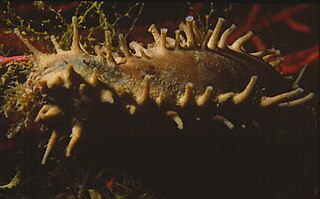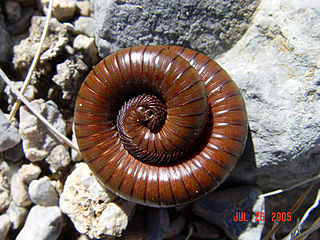 W
WCucumaria miniata is commonly known as the orange sea cucumber or red sea cucumber due to its striking color. This northeast Pacific species is often found wedged in between rocks or crevices at the coast or on docks and can generally be identified by its orange bushy tentacles protruding above the substrate.
 W
WHeterophyes heterophyes was discovered by Theodor Maximaillian Bilharz in 1851. This parasite was found during an autopsy of an Egyptian mummy. H. heterophyes is found in the Middle East, West Europe and Africa. They use different species to complete their complex lifestyle. Humans and other mammals are the definitive host, first intermediate host are snails, and second intermediate are fish. Mammals that come in contact with the parasite are dogs, humans, and cats. Snails that are affected by this parasite are the Cerithideopsilla conica. Fish that come in contact with this parasite are Mugil cephalus, Tilapia milotica, Aphanius fasciatus, and Acanthgobius sp. Humans and mammals will come in contact with this parasite by the consumption of contaminated or raw fish. This parasite is one of the smallest endoparasite to infect humans. It can cause intestinal infection called heterophyiasis.
 W
WHolothuria leucospilota, commonly known as the black sea cucumber/ Black tarzan, is a species of marine invertebrate in the family Holothuriidae. It has been placed in the subgenus Mertensiothuria making its full scientific name Holothuria (Mertensiothuria) leucospilota. It is the type species of the subgenus and is found on the seabed in shallow water in the Indo-Pacific.
 W
WMesacmaea mitchellii is a species of sea anemone in the family Haloclavidae. It is found in the northeastern Atlantic Ocean and the Mediterranean Sea where it burrows in soft sediment.
 W
WOcnus planci is a species of sea cucumber in the family Cucumariidae. It is native to the northeastern Atlantic Ocean.
 W
WOrthoporus ornatus is a North American species of millipede in the family Spirostreptidae that can be found in the U.S. states of Arizona, New Mexico and Texas, and as far south as the Mexican state of San Luis Potosí. They became very popular in the pet trade and many were exported to Western Europe. Brian Van Der Kieft and Max Prins were the first breeders of this species in Europe. Individuals on average are 4 inches (10 cm) in length, but can either be as small as 3 inches (76 mm), or exceed up to 6 inches (150 mm) in length. They are dark brownish coloured, but can sometimes be yellow. In fact, in every state the species look different. The antennae are located near the organs of Tömösváry. The species feed on both living and dead organic material. The species prefer sunshine, but can be seen on summer rainy days as well. A disturbed Orthoporus ornatus may curl into a coil and release a toxic substance that is located on all sides of its body. The species can live more than ten years. The species feed on shrubs of Ephedra, which grows in Jornada del Muerto, and on Salsola that grows in Albuquerque.
 W
WScolopendra heros, commonly known as the giant desert centipede, giant Sonoran centipede, Texas redheaded centipede, and giant redheaded centipede, is a species of North American centipede found in the Southwestern United States and Northern Mexico.
 W
WStichopus chloronotus is a species of sea cucumber. Common names include the greenfish sea cucumber, the spiky sea cucumber and the black knobby sea cucumber. It is native to the Indo-Pacific region. It has a wide range and is abundant and the IUCN lists it as being of "Least Concern".